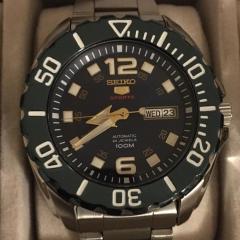-
Recently Browsing
- No registered users viewing this page.
-
Topics
-
Posts
-
Welcome. My mother wears a big zero I fixed up for her- one of the few dials she can read… …and what is the military second from right on bottom? Cabot?
-
Actually, I am aware that this watch has the wrong hands. The watch is in excellent condition and the dial is genuine, so I have to forgive it that. I do wish I could get some original hands for it though, so I am on the lookout. It looks like I might have to buy a non-runner spares watch for that though as even they are hard to find.
-
Yeah, those were the days! Now, sorry for going OT again but I just can't help myself! As a kid, I saw Draken (The Dragon) pass over my parents' house almost daily going to and fro the air base about 15 km from our house. Me and my friends used to play in the basement and when my mother called from the kitchen "Now they're coming" we'd drop whatever we were doing, ran out and looked into the sky. The roar from the engines felt like thunder and when they had passed we'd look at each other and say "That was the Hammer of the Commander-in-Chief" and it made us feel invincible. Happy days! As said in this video "When it thundered into the sky it immediately became one of the few war birds that Soviet Russia ever truly feared".
-
By rjenkinsgb · Posted
See around 2/3 of the way down this page, about battery fitting problems? https://adventuresinamateurwatchfettling.com/2023/12/26/the-worlds-first-transistorised-electronic-balance-movement-the-citizen-cosmotron-x8/
-








Recommended Posts